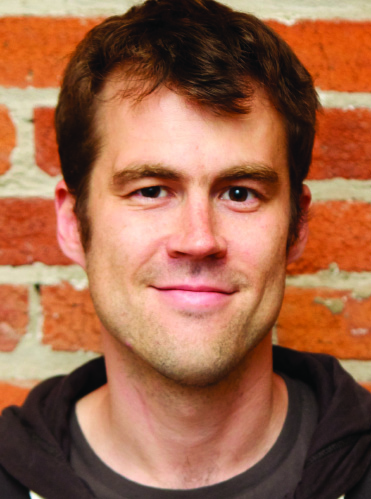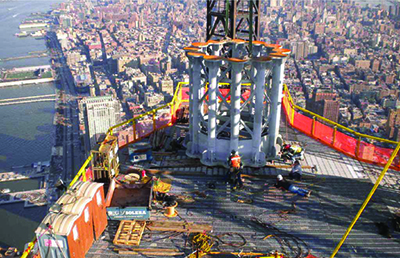Engineering Confab Focuses on Industry’s Future
LAS VEGAS—ATSC 2.0, broadcast workflow options for 4K Ultra HD television—yes, it is coming— and designing the new broadcast facilities at the new World Trade Center in New York. These are just some of the many sessions taking place during the NAB Show’s five-day Broadcast Engineering Conference, Sunday, April 6 to Thursday April 11 at the LVCC.
ATSC’S FUTURE
On the opening day, Sunday, Triveni Digital CSO Richard Chernock will delve into “ATSC 2.0: What Is It and How Will It Benefit the Broadcaster?” With the ATSC about to wrap up work on the ATSC 2.0 toolbox, this session will look at how this standard will help deliver media and interactive hybrid television content to connected TVs. In particular, ATSC 2.0 will support broadcaster/ viewer interaction for both live and recorded content. Chernock’s aim is simple: “I will explain the benefits of the ATSC 2.0 standard with regards to deploying nextgeneration television services,” he said. The 3 p.m. session will take place in Rm. S225/226.

Jon Dahl, vice president of encoding services for Brightcove ULTRA HD Which broadcast workflow will deliver Ultra HD to the home? That’s the title and the theme of a session being held Sunday at 4 p.m., also in Rm. 225/226. Based on a paper by Ian Trow, Harmonic’s senior director emerging technology & strategy, this session will cut through the Hollywood driven hype surrounding the 4K standard to look at the issues associated with delivering video with four times HDTV 1080p’s pixel rate to consumers.
Trow will discuss “what distinguishes Ultra HD from the workflow adopted for cinematic 4K,” he said, plus the resolution differences between the 4K/8K Ultra HD proposals and DCI 4K, appropriate frame rates, and “the bandwidth implications of Ultra HD deployed using either HEVC or H.264.” This session will also consider what production and play-out server requirements will be needed to support Ultra HD, how surround sound will fit in, and delivery options for getting Ultra HD to the home.
“For Ultra HD to succeed, the frame rate will have to increase from the 24 frames per second used for cinema,” said Trow. Also, “viable interface technology needs to be agreed, standardized and adopted at both the consumer and professional end of the workflow.”
BROADCASTING IN NEW YORK
On Tuesday, April 9 at 9:30 a.m. in Rm. S228, the Durst Organization’s John Lyons will give a fascinating tour of current and future New York City broadcast facilities in the session, “Broadcasting in New York City—The Reestablishment of Broadcasting at the World Trade Center in a Post 9/11 World.” (Lyons is the company’s assistant vice president and director of broadcast communications.) After the destruction of the original World Trade Center and its FM radio/TV transmission system, the Durst Organization rebuilt the broadcasting facility at 4 Times Square to host the WTC’s orphaned stations. Today, 4 Times Square houses primary and backup transmitters for several FM and TV stations in the city.
Currently, the Durst Organization is designing (and will be running) the radio/TV transmission facility at the new One World Trade Center. This means that this company has developed major transmission facilities in the Big Apple twice in the last 12 years.
The professional video industry's #1 source for news, trends and product and tech information. Sign up below.

On Tuesday, April 9, John Lyons from the Durst Organization will update conference attendees on plans to install broadcast antennas at the new One World Trade Center in New York. The first spire section of the building was installed in December. Lyons will discuss disaster recovery, green technologies, and antenna design, as well as issues that could hold up the launch of the new WTC facility. Specifically, “at this point in time the spectrum repack is a major issue, and we won’t have answers to assignments for an extended period of time,” he said. “This could cause delay in exactly what antennas are put in place to accommodate it.”
Lyons will also share how the Durst organization is applying “lessons learned” from 9/11 and the loss of the original WTC transmission site. Among them: “Having backup sites and means of getting programming to them is one of the most important lessons,” he said. “Putting all your eggs in one basket simply does not work.”
CLOUD CONSIDERATIONS
As demand for high-bitrate video grows, bandwidth is becoming a growing headache for content producers. Can the cloud provide some relief? Jon Dahl, vice president of encoding services for Brightcove, a Boston- based provider of video cloud solutions, will delve into the subject with “Rethinking Large Video Files in the Cloud,” Wednesday, April 10 at 5:30 p.m. in Rm. S227.
“Cloud processing has enormous advantages for video publishers, but when dealing with highbitrate content, transferring files to the cloud can be slow,” Dahl said. “We’ll talk about ways to mitigate this.”

Richard Chernock,
Triveni Digital’s CSO File storage and encoding is also an issue, because data can pile up fast. For instance, if a TV station creates two hours of high bitrate 50 Mbps video each day—which amounts to a day’s worth of newscasts—their library will accumulate 32,000 GB of data after two years. Although 2,000 GB of content could be transcoded to support a new format in a few hours, sending this converted data over the public Internet at 100 Mbps would take more than a month.
Dahl will look at cloud-based solutions to this dilemma. He will also discuss appropriate transcoding workflows for high-bitrate content, how publishers can eliminate bottlenecks when working in the cloud, and how transfer, transcoding, storage, and archiving fit can all fit together.
Dahl’s goal is for participants to come away “understanding the best ways of dealing with large file workflows in the cloud,” he said. The good news: “While working with high-bitrate video in the cloud can be challenging, many bottlenecks can be eliminated or aren’t as bad as they appear.”
For more information on the Broadcast Engineering Conference, visit www.nabshow.com.
James Careless is an award-winning journalist who has written for TV Technology since the 1990s. He has covered HDTV from the days of the six competing HDTV formats that led to the 1993 Grand Alliance, and onwards through ATSC 3.0 and OTT. He also writes for Radio World, along with other publications in aerospace, defense, public safety, streaming media, plus the amusement park industry for something different.

